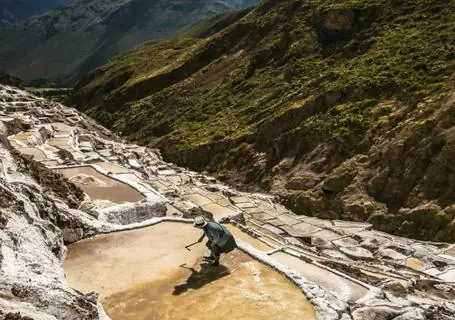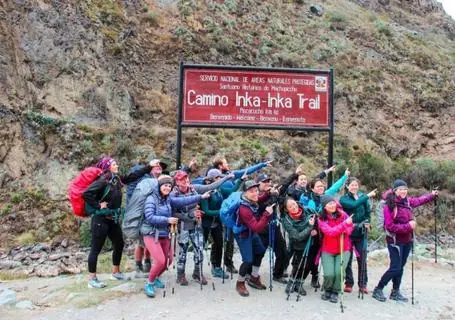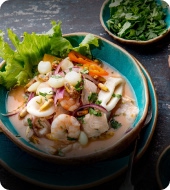Maras and Moray by Mountain Bike! - Full Day




 View All PhotosView All Photos
View All PhotosView All PhotosAdventure
Moderate - Demanding
Cusco, Maras & Moray
Biking / Atv, Archaeological / Architecture
cardinfo-price-per-adult
| cardinfo-text-5 | ||
| cardinfo-text-7 | Not included | |
| cardinfo-text-8 | cardinfo-not-included | |
cardinfo-text-10
h2-title-1
Maras and Moray are two amazing attractions located within a short distance of each other, creating the perfect half-day tour in the Sacred Valley of the Incas. Maras is famous for its salt evaporation ponds, which have been in use since at least Inca times. Moray, meanwhile, is an Inca archaeological site that looks like something straight out of a sci-fi movie. Built as an agricultural laboratory of sorts, it consists of several large terraced circular depressions that were used to test crop production in various microclimates. Together, these two sites provide one of the most fascinating spectacles in the Cusco Region.
Our Maras to Moray half-day biking tour is suitable for all types of riders. The route consists of a series of fairly easy sections that cover about 35 KM / 22 miles in total. We will pass through small villages and see wonderful sweeping views of the high Andean plains of the Sacred Valley and the surrounding mountains. If we are lucky, we can spot stunning flora and fauna, including colorful hummingbirds and butterflies, as we cycle on our way to Maras and Moray.
 Free Brochure
Free BrochureReady to explore? Download the brochure and start planning!

Your FREE travel expert is just a click away
Or Call us now! (888) 803 8004
h2-title-2
Maras and Moray by Mountain Bike!
This full-day mountain bike tour will begin when we pick you up from your hotel in Cusco at around 8 AM. We’ll then drive to the town of Chinchero, which we will visit briefly before getting our bikes and setting off. At around 01h30 we’ll reach Moray, which we’ll have plenty of time to explore. Then we’ll cycle to the town of Maras, where we can see some of the town’s 38 colonial doors, visit some local artisans, and learn how to prepare chicha, the local fermented corn brew. At around 13h00. we’ll have a boxed lunch and then set off towards the salt evaporation ponds, where we can enjoy this wonderful sight and learn about the salt evaporation process.
Once we’ve spent enough time at Maras, it will be time to jump back into our vehicle for the trip back to Cusco. We Should arrive at around 17h30 (Approx).
- Meals: Lunch and Snacks
- Excursion: Maras and Moray Mountain Bike Tour
- Tour Guide: Adventure Tour Guide: English/Spanish
- Entrance Fee: To Maras and Moray Not Included
h2-title-3
Secure your spot on the trip now with our real-time availability information.
Act quickly—these spots sell out fast!
h2-title-4
whats-included-title
- Transport: Private Service.
- Your Journeys Highlight Moment: Salt mines and Moray
- First aid kit, if you are taking any medications, please bring your prescription with you.
- Meals: Lunch and Snacks.
- Professional Guided Tour ENG /SPA.
- Mountain Bike and safety equipment.
whats-not-included-title
- Medical and emergency evacuation insurance.
- Trip cancellation insurance or any other travel insurance. (You will be asked to sign a medical disclaimer form for this activity).
- Tourist ticket to enter Moray and entrance to Maras Salt Ponds.
- Tips/Gratuities.
h2-title-5

specialist-box-title
Natividad Cortez
specialist-box-phrase
top-tours-title
top-tours-info

Trek Along the Inca Trail To Machu Picchu
7daysTrek Along The Inca Trail To Machu Picchu with Valencia Travel. We are a renowned Peruvian tour company offering trekking experiences throughout Peru.
card-type-tagAdventure
card-activity-tagModerate - Demanding

Classic Peru Trip
7daysValencia Travel's classic Peru trip is a bucket-list adventure. This 7 Day trip will take you on unforgettable experiences throughout the Peruvian heartland.
card-type-tagCultural, Gastronomy
card-activity-tagEasy

Classic Inca Trail
4daysThe Inca Trail trek to Machu Picchu is the ultimate bucket list hiking experience! Join us on this Classic 4 Day & 3 night Inca Trail Hike!
card-type-tagAdventure
card-activity-tagModerate - Demanding
asso-info-title
asso-info-description
 Aventure
Aventure
 Cultural
Cultural
 Gastronomy
Gastronomy
 Wellness
Wellness
 Local Living
Local Living
 Luxury
Luxury
















